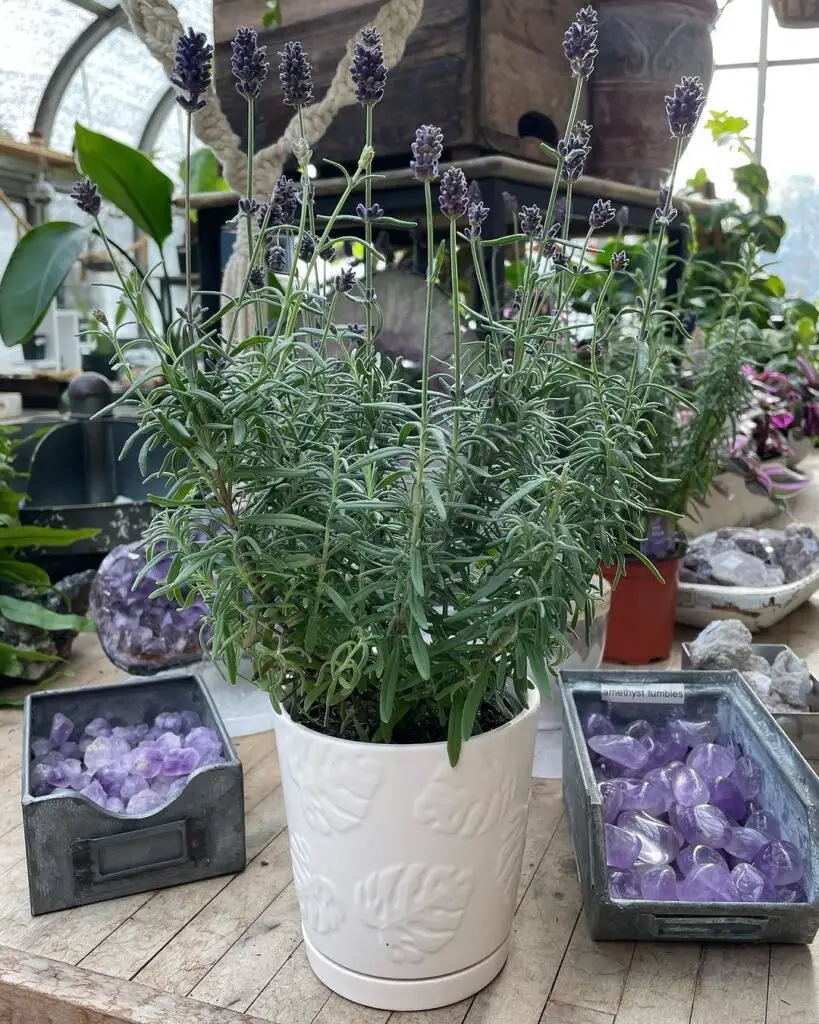Explore the essentials of growing and caring for lavender plants. Learn about planting, maintenance and tips for enjoying the fragrance and beauty of this versatile herb in your garden.
Lavender is a beloved plant known for its soothing fragrance and beautiful purple blooms. Whether you’re a seasoned gardener or a beginner, growing lavender can be a rewarding experience. This guide will walk you through everything you need to know about planting, growing and caring for lavender plants.
Here’s a comprehensive overview of lavender plants:
| Aspect | Details |
|---|---|
| Botanical Name | Lavandula spp. |
| Common Name | Lavender |
| Plant Zone | USDA Zones 5-9 (depending on the variety) |
| Sun Exposure | Full sun; requires at least 6-8 hours of direct sunlight daily |
| Soil Type | Well-draining, sandy or loamy soil; prefers slightly alkaline soil |
| Watering | Allow soil to dry out between waterings; water infrequently, as lavender is drought-tolerant |
| Growth Habit | Upright and bushy; forms a mound or clump of narrow, silver-green leaves with spikes of flowers |
| Height/Spread | Height: 12-36 inches (30-90 cm); Spread: 12-24 inches (30-60 cm) |
| Special Features | Known for its fragrant purple, blue, or white flowers that attract pollinators. Lavender is used in aromatherapy, cooking, and crafts. It also has gray-green foliage and can be used as a hedge, ground cover, or in containers. Lavender is appreciated for its drought resistance and ability to thrive in poor soils. |
About Lavender Plants

Lavender (Lavandula) is a fragrant herb that belongs to the mint family. It’s prized for its aromatic flowers and silvery-green foliage. Here are some key facts:
- Native to the Mediterranean region
- Grows as a small shrub
- Known for its calming scent and versatile uses
Popular Lavender Varieties
- English Lavender (Lavandula angustifolia)
- French Lavender (Lavandula stoechas)
- Spanish Lavender (Lavandula stoechas)
- Lavandin (Lavandula x intermedia)
Planting Lavender
When to Plant
The best time to plant lavender is in the spring after the last frost, or in the fall before the first frost.
Where to Plant
Lavender thrives in:
- Full sun (at least 6 hours of direct sunlight daily)
- Well-draining soil
- Slightly alkaline soil (pH 6.7 to 7.3)
How to Plant
- Choose a sunny spot with good drainage
- Dig a hole twice the size of the root ball
- Mix some organic matter into the soil
- Place the plant in the hole, ensuring the top of the root ball is level with the soil surface
- Backfill with soil and water thoroughly
Caring for Lavender Plants
Watering
- Water deeply but infrequently
- Allow soil to dry between waterings
- Avoid overwatering, as lavender is drought-tolerant
Fertilizing
- Lavender doesn’t need much fertilizer
- Apply a light application of slow-release fertilizer in spring
Pruning
- Prune lavender in early spring or after flowering
- Remove about 1/3 of the plant’s height
- Avoid cutting into woody stems
Winter Care
- Protect plants from harsh winter winds
- Add a layer of mulch around the base
- Consider covering plants in regions with severe winters
Common Lavender Problems
Pests
- Spittlebugs
- Aphids
- Whiteflies
Diseases
- Root rot (from overwatering)
- Fungal diseases in humid conditions
Harvesting and Using Lavender
When to Harvest
Harvest lavender when the buds have formed but before the flowers have fully opened.
How to Harvest
- Cut stems in the morning after the dew has dried
- Use sharp, clean scissors or pruning shears
- Cut stems just above the leaves
Uses for Lavender
- Culinary uses (teas, baked goods, herbs de Provence)
- Aromatherapy and essential oils
- Dried flower arrangements
- Sachets and potpourri
- Natural pest repellent
Tips for Growing Lavender in Containers
- Choose a pot with good drainage
- Use well-draining potting soil mixed with some sand
- Place in a sunny spot
- Water when the top inch of soil feels dry
- Bring indoors or protect during harsh winters
Companion Plants for Lavender
Growing lavender can be a delightful and rewarding experience. With its fragrant blooms and versatile uses, it’s a valuable addition to any garden. By following this guide, you’ll be well on your way to enjoying the beauty and benefits of lavender plants. Remember to provide plenty of sun, well-draining soil, and proper care, and your lavender will thrive for years to come.
External link: Lavender Growing Guide – University of Vermont Extension
For more gardening tips and plant care guides, visit usagardenhub.com







5 Comments on “Lavender Plants : A Complete Guide to Growing and Caring for Lavender”